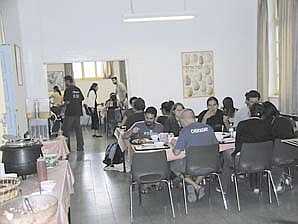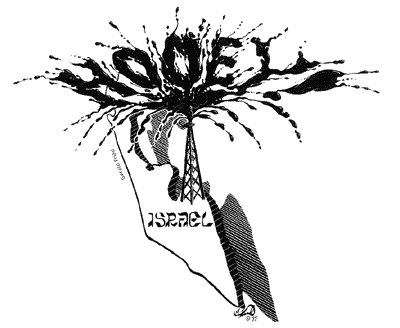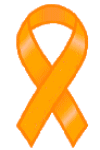 The entrance of Ulpan Etzion.
The entrance of Ulpan Etzion.Photo:
Gil Zohar
Some posts I’ve been meaning to get to... (Part II)As an alumnus of the 112th Ulpan Etzion class this story rings very close to home! Would the 114th class really be the last one? If this story is true it's really not so bad. The main building - though beautiful is old and quite frankly it's been in need of repair for quite some time. There's plenty of room to build a new main building on the other side. With a new main building it'll be a great campus - if you thinking of Aliyah and you are single and under 35 I definitely recommend Ulpan Etzion. It's true I made some great friends there including my flatmate. Also I still learn a seder at night after work with my roommate from the Ulpan. It would be a real shame and loss for Aliyah and Eretz Yisrael if Etzion were forced to shut down...
Moving houseGIL ZOHAR,
THE JERUSALEM POST Oct. 26, 2006
To paraphrase Mark Twain, news is premature of the demise of Ulpan Etzion - the flagship Hebrew-language school for academics run by the Jewish Agency (JA).
As recently reported by The Jerusalem Post, the Carmelite Church - which is connected to the Vatican - will not renew its lease in June on the aging building that has served as the absorption center's main dormitory and dining hall for more than half a century. The property, located on Rehov Gad in Baka, was recently sold to a private developer who plans to construct luxury housing on the site, says JA spokesman Michael Jankelowitz.
The JA, which works with the Ministry of Absorption to recruit and settle new immigrants - is investigating alternative residential arrangements, he explains. (Yoel David, the JA's director of properties, refused In Jerusalem's request for comment.) Among the ideas is to build a new main dormitory on the leafy, 10-dunam campus. The compound currently contains five low-rise buildings apart from the main building.
Founded in 1949 as the first language school in the newly established state, Ulpan Etzion currently is home to 102 new immigrants and 53 external students who live off-campus, says Anat Uzzan, the ulpan's director since returning from Montreal in 2005 where she served a three-year stint as an aliya emissary.
 Divine Intervention? The Vatican-allied Carmelite Church recently refused to renew the lease on the venerable Ulpan Etzion.
Divine Intervention? The Vatican-allied Carmelite Church recently refused to renew the lease on the venerable Ulpan Etzion.Photo:
Gil ZoharThe cosmopolitan, polyglot student body ranges in age from 22 to 35. All are single academics and professionals, representing the 114th class at the school, says Uzzan, who lovingly nurtures her charges as a mother hen raises her chicks.
The largest contingent hails from France. But Ulpan Etzion's student body represents the ingathering of the exiles, with students coming from countries as diverse as Aruba, Turkey, Greece, Uruguay, Brazil, Mexico, South Africa and Britain. Some are the children of Israelis who settled abroad, including Soviet Jews who moved on to the West after a period in Israel.
Students spend the mornings of the five-month program studying Hebrew. Four levels of Hebrew are taught, with eight classes and 11 teachers.
The afternoons are devoted to cultural programs. Meetings with government bureaucrats fall in that rubric, with clerks from the Interior Absorption ministries coming to the school for ceremonies to hand the new immigrants their Identity Cards and Immigrant Certificates. Representatives from the Student Authority also come to advise those under 30 of their eligibility to study for free at Israeli institutes of higher education.
"This place has a certain magic," explains Uzzan, comparing the intensive program to paratrooper training. Students become "the best buddies, like in the army." She salutes her charges' idealism, leaving their careers and families to fulfill their Zionist dream. They're "oxygen for the state. They're doing something great, making a real contribution to Israel. They're truly outstanding students," she says with obvious affection.
Many hound the Draft Board to be accepted into combat units and to commence their military service earlier than scheduled, she notes.
"I love Israel. I want to go to the army," enthuses Michael Uzan who studied computer science in his home town of Sousse, Tunisia. And as if on cue, he opens his mail to find an IDF call-up notice for two years beginning in 2007.
Aviva Hirshman, who came from Toronto, says, "The connections we make [here] our incredible. We rely on each other. It's hard but it's beautiful. When they talk about life changing experiences, this is it."
Clive Chazzan, who grew up in the Sydney suburb of Rosebay together with many fellow South African expats, calls the school "lots of fun. I've made good friends. I go to the beach."
Indeed Ulpan Etzion has a certain reputation for its active social life.
"They're kids," Uzzan winks, adding the school has never had to call the police regarding parties that have gotten out of hand, nor had complaints from its neighbors - many of whom "adopt" students for Shabbatot and festivals. By the same token, many of the students settle in Baka and the neighboring German Colony locating their permanent housing near their first home in Israel.
The flip side of Ulpan Etzion's boisterous social scene are the many couples who met there and ultimately marry, Uzzan smiles.
Holding hands as they leave the cafeteria, Daniel Apfelbaum of Paris and Andrea Klimova of Prague report they're planning to rent an apartment together when the program ends in December. Apfelbaum, who left a six-figure position in Manhattan as a bond trader, is looking for a job with an investment bank or in finance. Klimova intends to study international relations at the Hebrew University.
Michael Flam of Ventura, California posts a blog of his experiences (http://blogcentral.jpost.com/newsItems/viewFullItem$1294) under the nom de plume "Exodus: Yehuda Hammer." Notable is his blog entry early in his stay: "I made aliya almost 40 days ago and aside from attending Hebrew classes for five hours a day, I have exerted little effort to learn the language. I frequently don't do my homework. Rather than speaking Hebrew with the other students at the Ulpan, I instead take the easy route and speak English. Every day I tell myself that I am going to start hitting the books, but I don't. Instead I play basketball, watch a movie, take swing-dancing class, go out for a hamburger or drink some beer with the many nice people at the Ulpan. But now the party is over. I need to study."
It's a gritty sentiment of determination to succeed one hears again and again from Ulpan Etzion's students.
Most seem to enjoy, or at least not mind, the communal aspect of living together - including having roommates and sharing a washroom with some 40 others, an experience Uzzan calls a "social pressure cooker."
If there's a fly in that cholent, it's the institutional cooking.
Sitting in Ulpan Etzion's neatly manicured garden, Michael Snider from the US enjoys a falafel he purchased on Derech Beit Lehem rather than eat the subsidized but somewhat unpalatable lunch. "Don't write about the food," he grimaces.
Another student from London, who asks that her name not be used, adds the kindest thing you can say about the cooking is that it's kosher.
(Students pay for their room and board out of the absorption basket that immigrants receive. Tuition is covered by the Ministry of Immigration and Absorption.)
A guard is posted at the gate of Ulpan Etzion, and the buildings are locked. But those security measures can only partially protect the students from Israel's sometimes rough-and-tumble reality. One student reported she had NIS 8,000 charged on her VISA card for purchases made in the United States - while she was attending class in Jerusalem. While credit card fraud is universal, what she found hard to deal with was the aggressive attitude of the bank's investigators - who grilled her at length before finally determining that it was a genuine case of fraud.
For Ruth Brainis, who was born in Haifa but grew up in Canada, that's just part of the acculturation process. "I feel like Ulpan Etzion is an incubator. I feel like you're transforming at every level."
 A Photoblog by Pinchas
A Photoblog by Pinchas





















